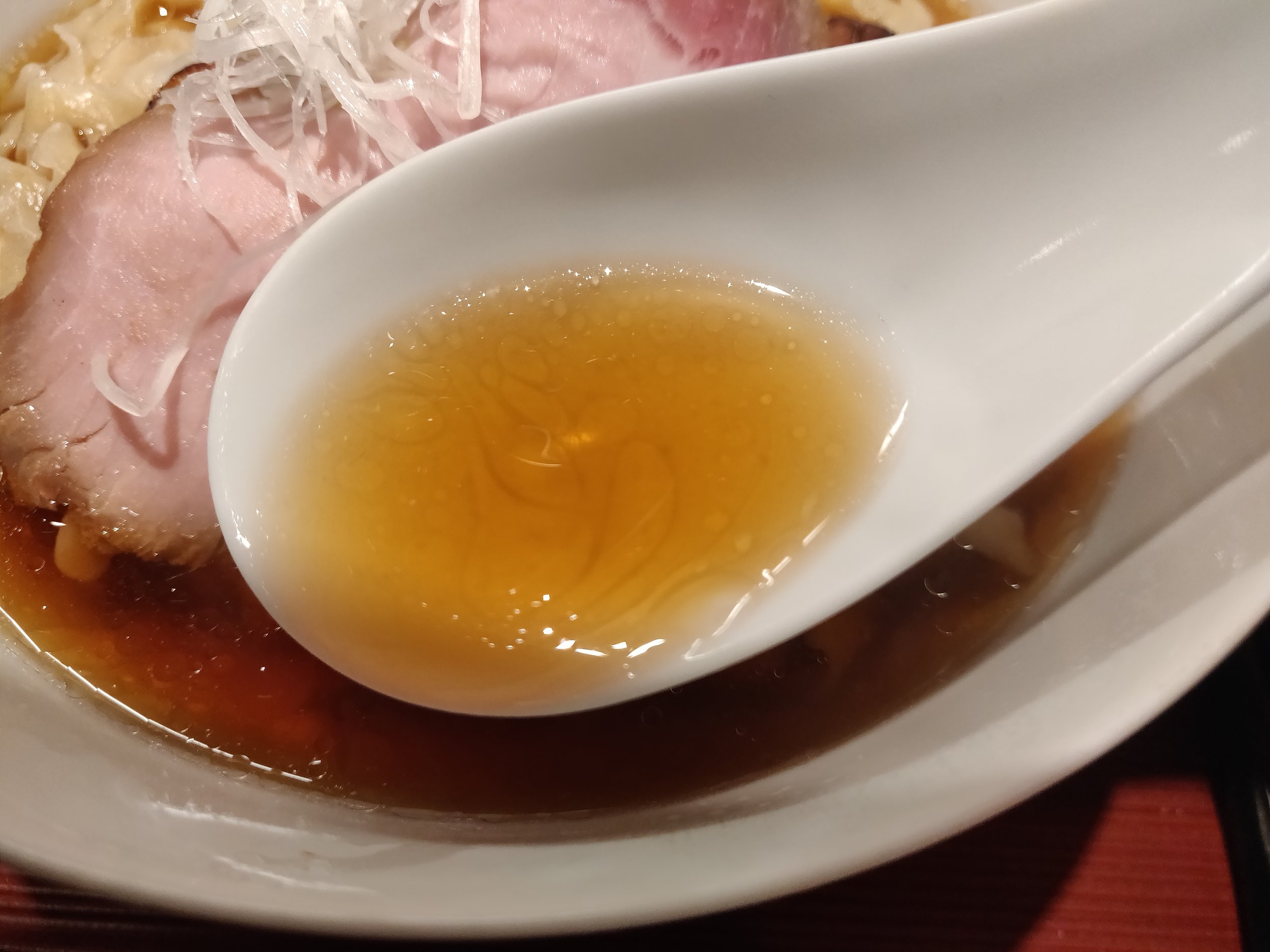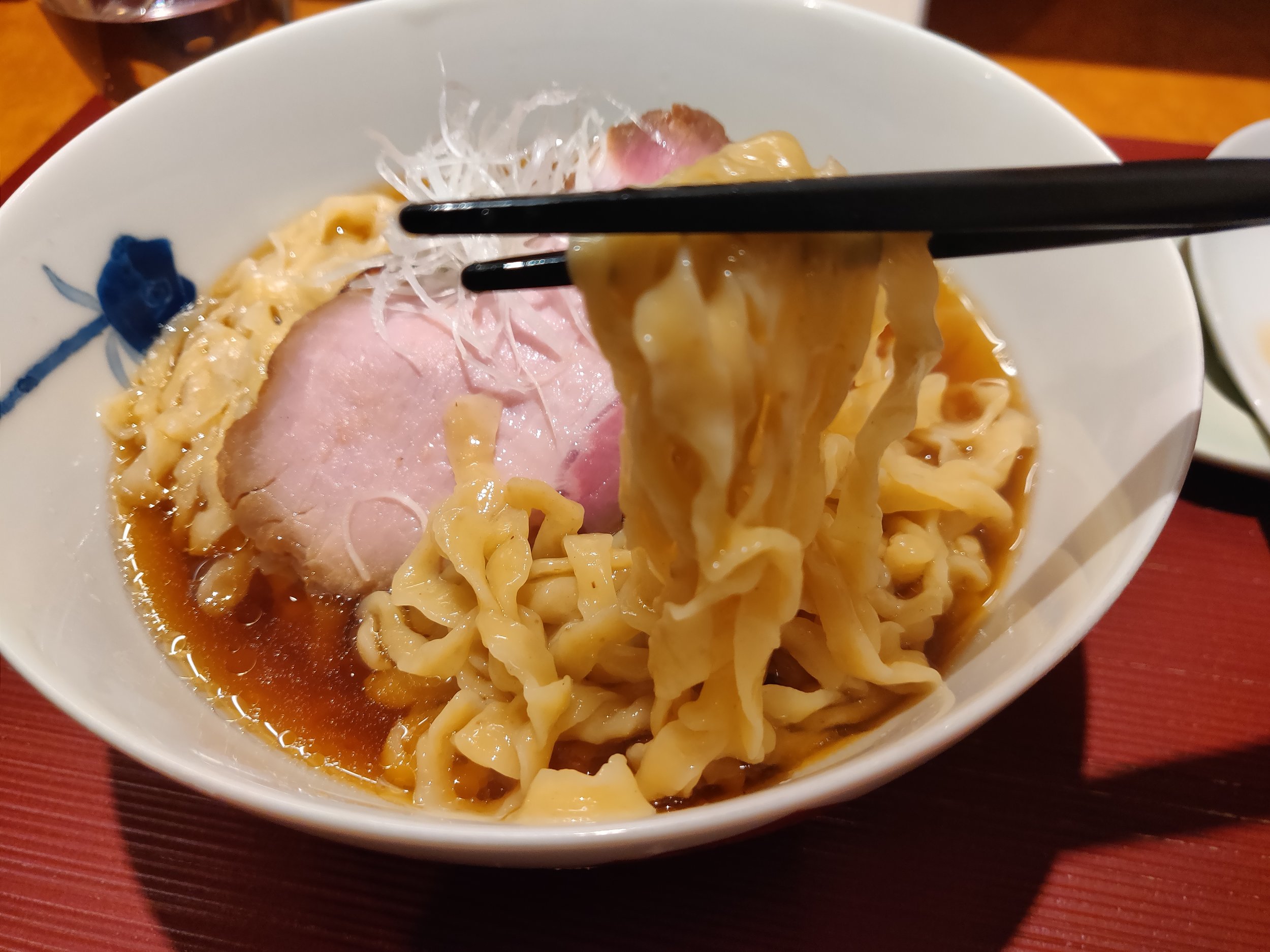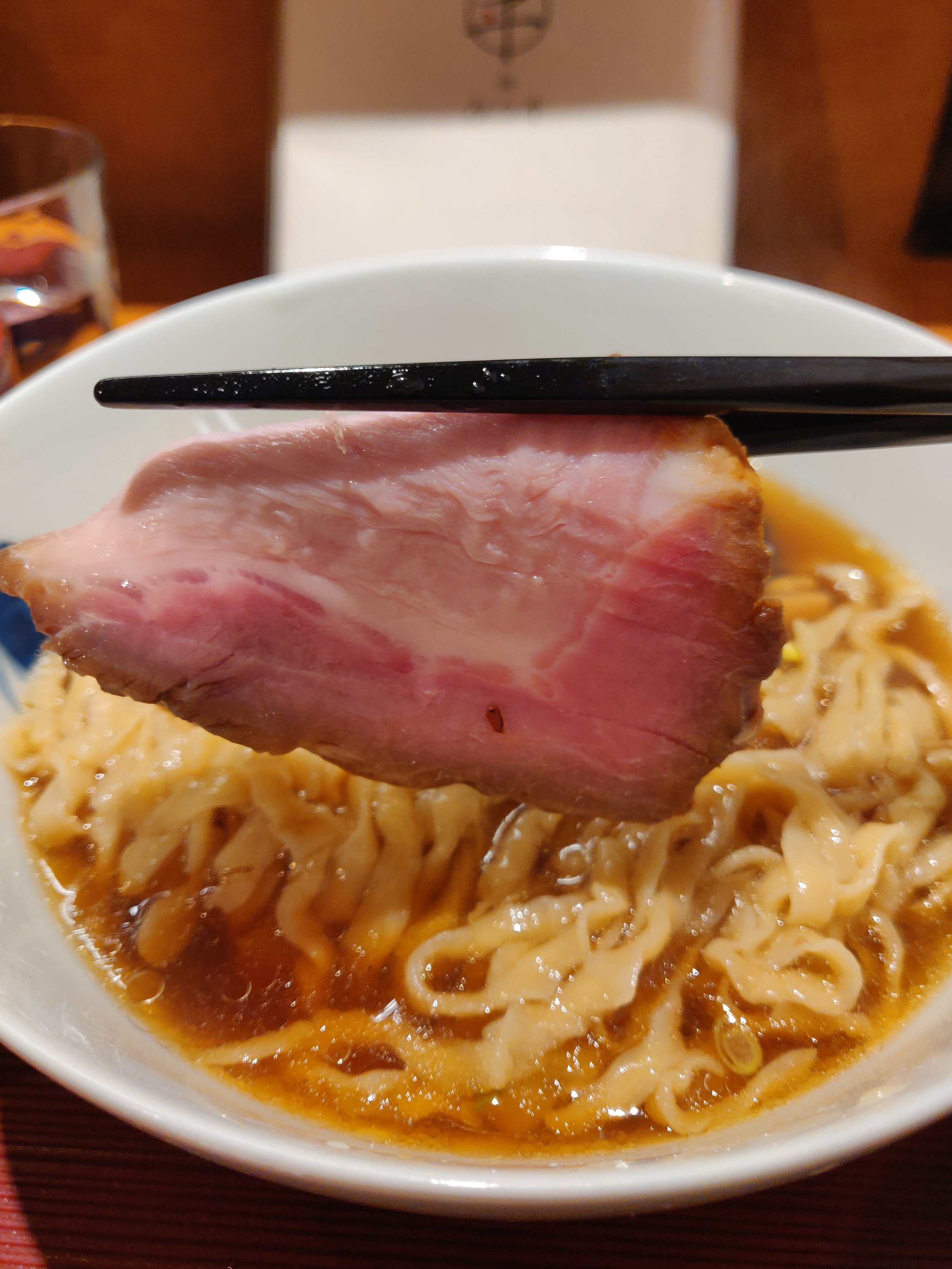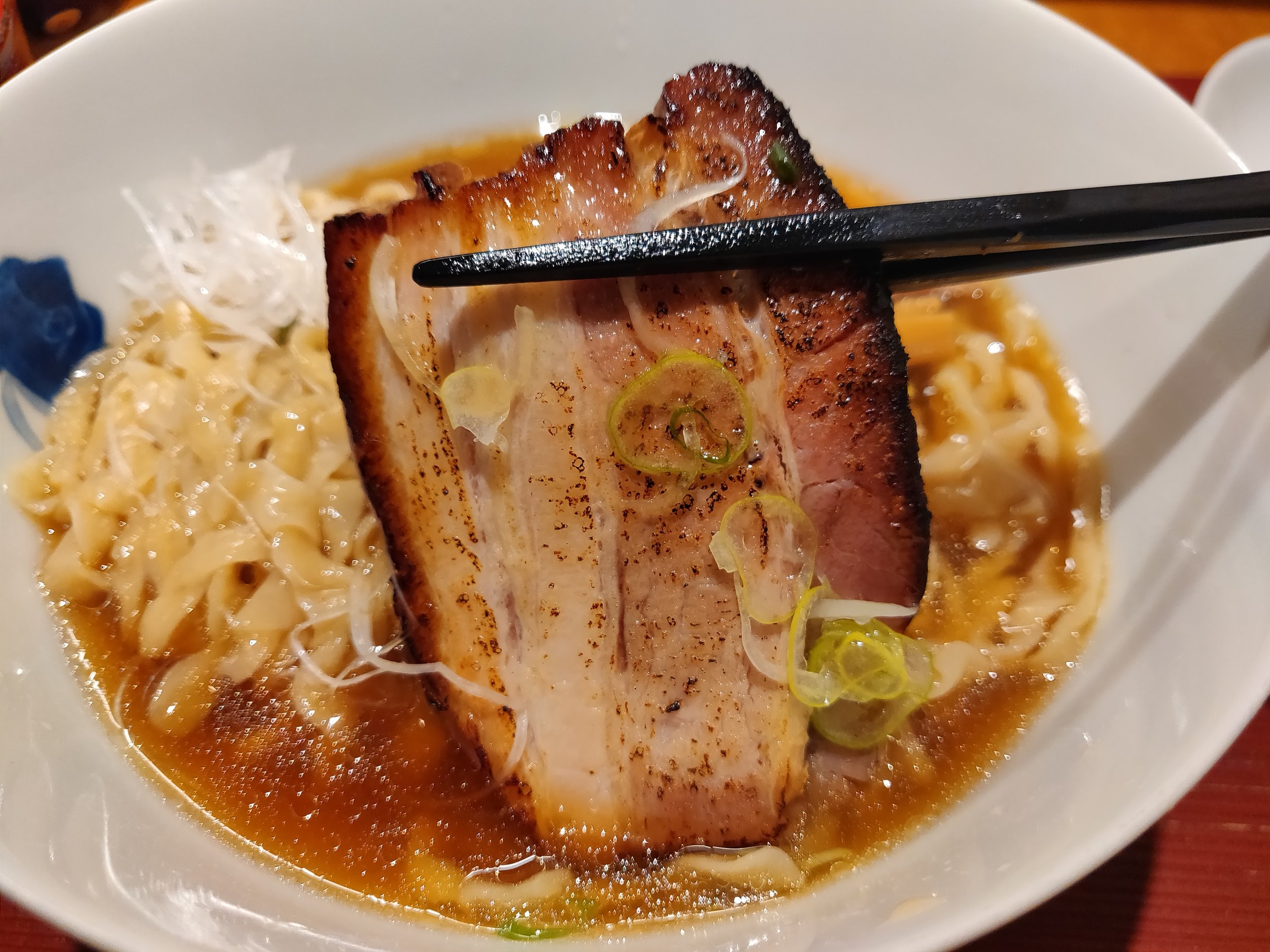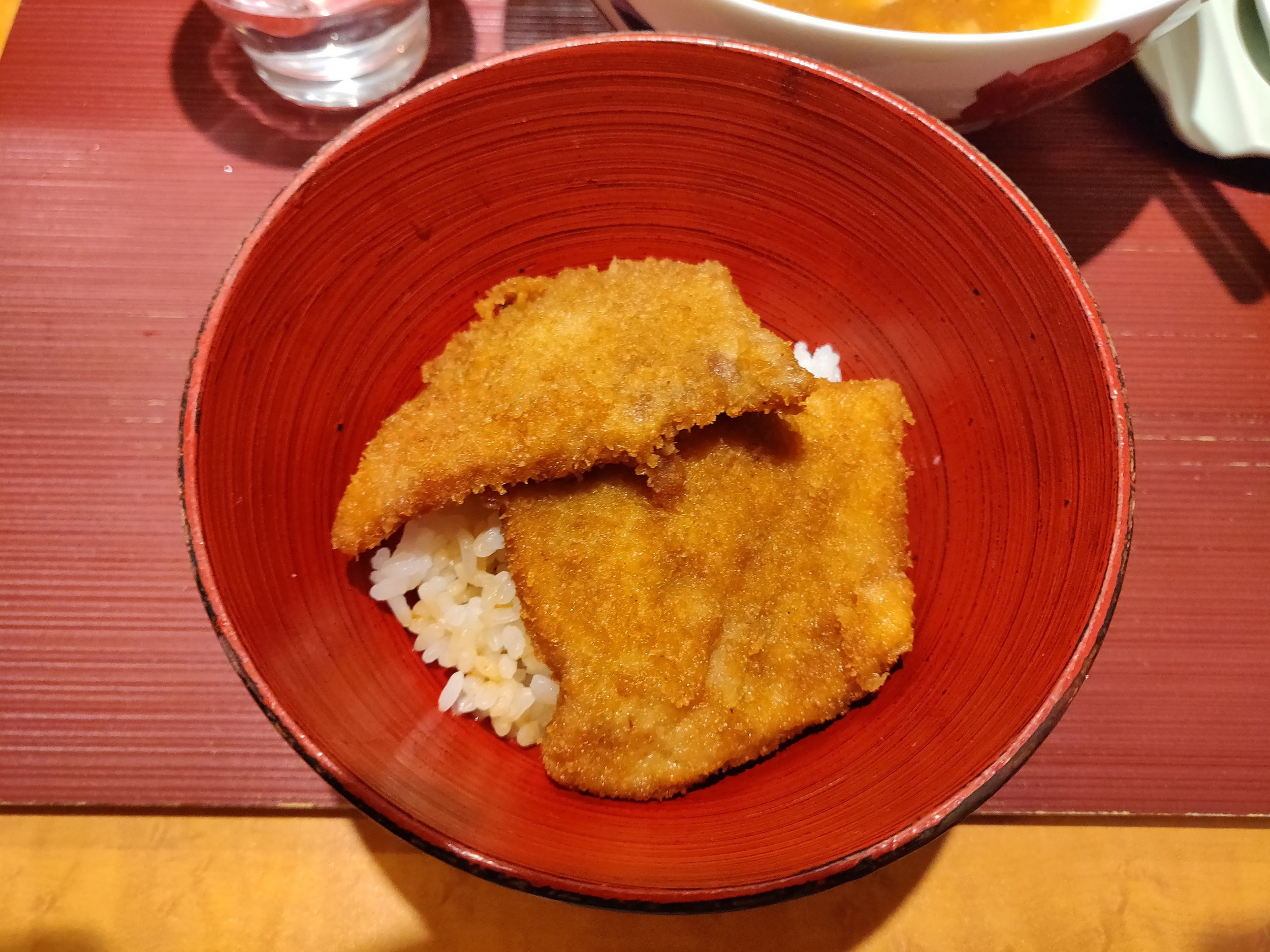Men Mitsuwi/Mitsui (麺 みつヰ) ; Future Michelin Star Winner, Asakusa
First glance at the exteriors of Men Mitsui and you might think it won’t be anything special. The shop is hidden in a small alleyway off of the main street of Asakusa and you might mistake it for an old Izakaya than a prestigious ramen restaurant. However, once you step inside and experience their fantastic dining experience you’ll realize why they are a Bib Gourmand, Michelin recommended restaurant and wonder why they haven’t won a star yet. To get to Mitsui, make your way to the Asakusa station and follow the main street all the way down towards Tawaramchi Station. Be sure to follow google maps as it is in a pretty small alleyway that’s easy to miss. You’ll likely be greeted by a line, but take your place at the end and you’ll have your bowl in no time.
Men Mitsui, or Mitsuwi depending on the romanization of the restaurant name, is open Tuesdays to Saturday from 11:00-14:30 for lunch and 17:30-21:00 for dinner. On Sundays and holidays, the hours are 11:00-16:00 and the shop is closed on Mondays. The shop provides you with an English menu, but if you want to see what they have to offer, following is the translation of their menu. From the top row, right to left, are the Shoyu Ramen (800 yen), Shio Ramen (850 yen), Shouga/Ginger Ramen (900 yen), Extra noodles (100 yen) and Oroshi Soba or Cold Noodle Ramen (400 yen). Each ramen variety comes with char siu, menma, and the chef’s choice of veggies which is usually a variety of Japanese herbs and green onions. You have a choice of hand massaged, thick noodles or regular straight, thin noodles. I suggest going for the hand massaged noodles as these are the noodles they are most famous for. Extra toppings of egg (100 yen), Char siu (250 yen), Menma bamboo shoots (100 yen), and green onions/Japanese herbs (150 yen) are also available. The bottom row are the rice and drink menu starting with a Katsudon or deep fried pork over rice (400 yen), Soboro Gohan of rice with minced chicken (150 yen), and Large Soboro Gohan (200 yen). Drinks are Yebisu Beer (500 yen), Non Alcoholic beer (300 yen), and Japanese Sake (500 yen). There is no ticket machine here and so when you take your seat at the counter, a wait staff will provide you with a menu and take your order there. Meals are prepaid so have your money ready after you place your order. Again, they do have English menus inside so just ask for one when you take your seat. Once you place your order, sit back and enjoy the show as the chef will begin preparing your ramen right in front of you at the counter.
Men Mitsui’s dedication to detail is unlike any other ramen restaurant and it begins before you even place your order. When you take your seat, you’ll be welcomed with a hot towel and a place setting with chopsticks, spoon, menu, and water carefully placed in front of you. The experience here more closely resembles a traditional Japanese restaurant than a typical ramen shop. Although it is technically a mom and pop shop run by the chef and his wife, they ensure you have a fine dining experience rather than a sit and go ramen chain. What I liked most about Men Mitsui was their humbleness despite their gaining popularity and notoriety. While they have their Tabelog top 100 and and Michelin Bib Gourmand label displayed inside, its rather discreet and not out in front of the shop showing off.
On this visit, I opted for the Shoyu Ramen with their famous hand massaged, thick noodles. The presentation at Men Mitsui is, again, second to none. While first glance, you might not realize it, a lot of thought went in to how this ramen is displayed. Under the piping hot, pristine, golden brown soup lay the carefully hand massaged noodles. Placed directly above the noodles is the menma bamboo shoots with the roasted char siu sitting on top. Next lies the sous vide pork char siu with a bit of scallion strands decorating the top. The order is important here; the menma bamboo shoots are least susceptible to heat changing its flavor profile hence it being closest to the soup. The roast pork is next as it already has heat passed all the way through and the soup won’t cook it through the charred exterior. Finally the sous vide pork lay on top furthest from the hot soup so that its soft texture remains throughout your bowl. This level of dedication surely didn’t go unnoticed and I thoroughly enjoyed every bite of my bowl.
The soup at Mitsui is a beautiful translucent brown from the Shoyu tare brimming with flavors from the chicken stock. As you can see from the photo, there is a fair bit of chicken fat that floats above the surface coating each noodle as you take a bite. The broth itself is a Chintan, where chicken carcass is simmered on low heat to extract the flavors without too much of the fat and marrow to muddle it in to a Paitan. Everything about the soup exudes excellence with the gentle flavors radiating with each spoonful. Noodles takes the DNA of the Mendokoro Honda and Shichisai family line with the added hand massage of the chewy, thick texture. Hand massaging the noodles gives each strand a unique texture with the curves and ridges clinging on the perfect amount of soup. The sous vide char siu is incredibly tender and take on the flavors of the gentle soup. The gentle cooking style ensures that the pork fals apart in your mouth, but remains in tact when picking them up with your chopsticks. The roasted pork adds the smoky aroma that fills your nasal cavity giving the bowl a bit of the seared flavor it lacks in the other components. Green onions and scallions provides a refreshing crunch that helps cut through the fat and oiliness of the soup so that your mouth isn’t overpowered the entire way through. It really was a well designed and carefully thought out dish that only the true dedicated ramen chefs can pull off.
I finished my meal off with a bowl of their pork tonkatsu over rice. Each pork piece is deep fried to order and dipped in the chef’s homemade tonkatsu sauce before carefully placed over a bowl of Fukui prefecture’s finest rice grains. You don’t find many ramen restaurants serving a Katsudon as a side, but the chef proudly serves his rendition to welcoming patrons. The deep fried pork in and of itself is quite simple with no added frills, but this is what makes it stand out in my opinion. A ramen shop serving a plain katsudon with each ingredient from the rice grains, to pork variety and finally his sauce makes the bowl stand out tremendously.
Honestly, every detail of Men Mitsui is so well done that I’m surprised that it hasn’t yet received a one star from the Michelin Guide. Everything from the interior decor to the place setting and finally the ramen makes for an incredible, fine dining experience. I thoroughly enjoyed every dish I had and will have to make it back for their Shouga Ramen, or ginger ramen, as it is also quite popular among ramen enthusiasts. If you’re looking for some high end Japanese dining experience without the exorbitant prices, be sure to check out Men Mitsui. The shop is definitely on my short list of restaurants to look out for on the next Michelin Guide and recommend a visit before they get too much publicity.




